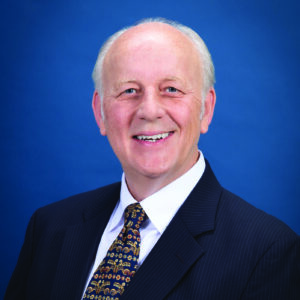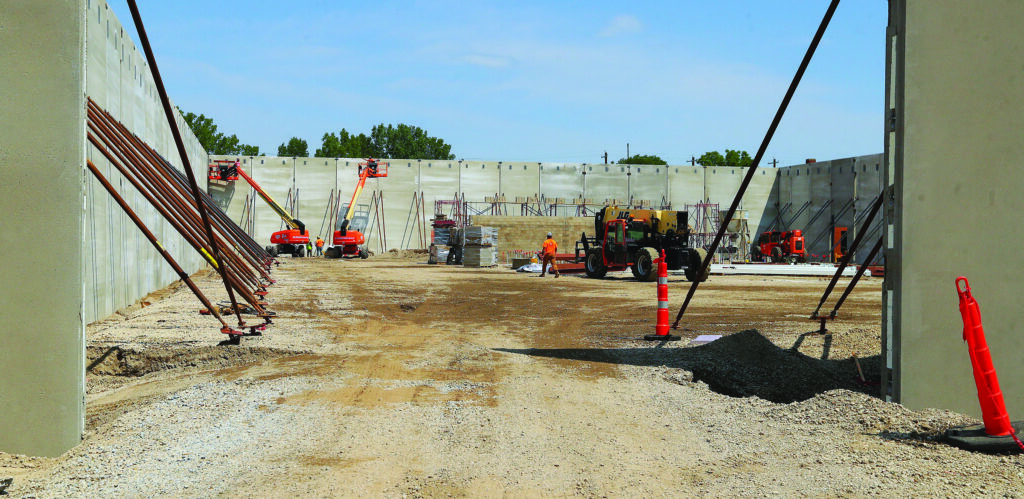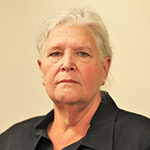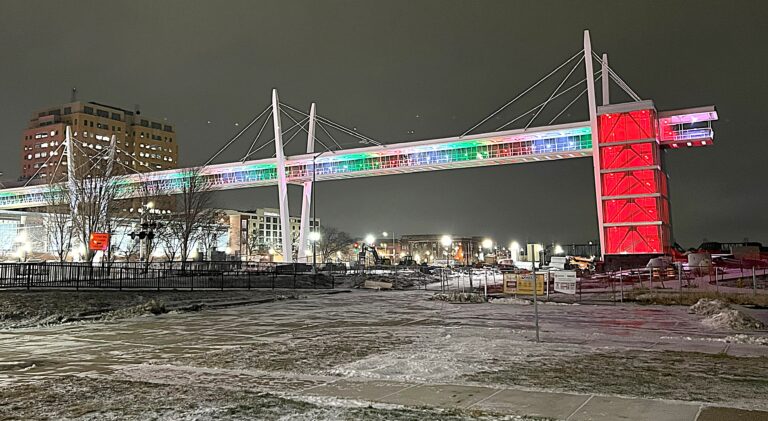Housing, city economic development leaders and other stakeholders gathered in Moline on Thursday, Aug. 22, to celebrate the first 50 years of a Community Development Block Grant (CDBG) program that has invested $175 million in the metro Quad Cities.
The CDBG birthday celebration, complete with proclamation, was organized by the City of Moline and held at Mercado on Fifth. Leaders from Moline, Rock Island, Davenport and Bettendorf joined the party along with a representative of the U.S. Department of Housing and Urban Development (HUD). That cabinet-level department administers the CDBG program.

The Mercado on Fifth location for the well-attended gathering also offered an example of what HUD’s flexible CDBG funds can do for local communities.
Those dollars were invested in Mercado’s recently completed, long-awaited multi-purpose commercial-grade kitchen. This new tool is serving the popular outdoor Friday night market and helping develop entrepreneurs.
For example, Mercado Executive Director Frances Williams said the “upgrades are vital for offering food safety classes in Spanish, a key part of our entrepreneurial ecosystem.”
The CDBG program was added to HUD’s housing and development arsenal in 1974. Moline City Administrator Bob Vitas said his city has received $42 million in CDBG funds over the past five decades.
“It’s a significant investment in our communities that helps lift our communities up and provide housing for everyone across the board,” he said. He also credited city staff – led for 24 years by Kaye “K.J.” Whitley, Moline’s community development manager – for working tirelessly to capture funding and put it to work where it was needed.
“Where would we have been without HUD?” Mr. Vitas asked before sharing a list of investments and developments that HUD CDBG funds made possible.
CBDG spurs Bass Street
That includes the $3 million in CDBG funds Moline borrowed against to purchase 13 parcels of land, relocate nine businesses and demolish seven buildings, he said. It eventually became Bass Street Landing, an important Quad Cities destination. It also has attracted businesses and downtown developments. They incluced Centre Station, the John Deere Commons, the Radisson hotel (now the Wyndham) and the former TGI Friday’s. Other additions included RiverStation, Bass Street Chop House, the Kone Building and Stoney Creek Inn.

“That $3 million generated over $30 million in public and private investment,” Mr. Vitas said. “That speaks to why that program was created and it speaks to why all of us have benefited from that program.”
These days those dollars are at work in Moline’s new East Gate TIF. That east-end riverfront area neighborhood is home to a massive expansion by Parr Instrument Company. Mr. Vitas said it represents the first major industrial development project in the city in 50 years.
Funds also are being used throughout the Quad Cities to create a renaissance for old and neglected communities through infrastructure, housing, economic development and more.
Davenport Director of Community and Economic Planning Bruce Berger said of the more than $80 million CDBG has invested in his city over the past 50 years, “It’s hard to think of how you existed without it.”
The program’s flexibility is also critical because it allows cities to spend the money where they know it is needed most. And the dollars can be used for a community’s current and most-pressing needs, he said.
For example, prior to the eradication of Smallpox, CDBG funds were used by many cities to combat its impact. Once that crisis was met, Mr. Berger added, local leaders “pivoted” to confront the next big challenges.
CDBG a cornerstone
“That’s what CDBG means to us,” Mr. Berger said. “We as communities get to figure out what it is that we need to target. And I think really that’s the cornerstone of its longevity for all these years with different administration and different political tugs and pulls. It’s still there.”
The Rev. Dwight Ford, executive director of Rock Island-based Project NOW, also lauded that ability to pivot. “These are flexible dollars to ensure the most disadvantaged and unstable communities have a chance to stand on a sure foundation so that they can take the leap up and out of poverty,” he said.
Rock Island Community and Economic Development Director Miles Brainard added, “I think that when you look at the 50-year history of the CDBG, it is hard to find a program of similar scope, breadth and value, that has improved the lives of people we’re working for that much.”
Kimberly Danna, Illinois field director for HUD, lauded the cities and communities who have leveraged the dollars provided through CDBG to further that federal cabinet department’s mission.
She also was surprised by the large crowd of Quad Citians gathered to celebrate 50 years of CDBG funding. “I should have brought a bigger cake,” she quipped.
When Ms. Danna first began at HUD, she said, “CDBG was a teenager. So I have had the great pleasure and honor of seeing this program, this big, broad and flexible program, provide benefits to communities throughout the state of Illinois and the partners who see to that,” she said.
It’s a flexible program built as a partnership that gives local government local control. As a result she said, “Since 1974, the CDBG program has provided more than $160 billion in investment to over 1,000 communities across the United States.”
Putting ‘ud’ in HUD
She added, “It’s important to recognize that his money is a mainstay in the budgets of local governments and states and has been for half a century.
Since 2005 alone, Ms. Danna said, CDBG has invested in an estimated 1.9 million homes across the nation. It has funded public services that have improved the lives of more than 194 million low- and moderate-income people.
“We put the ‘ud’ in HUD,” she said.
She added “We do urban development. We do economic development and this that’s really critical. We’ve got the housing side.”
You can’t do those things, she said, without also doing downtown development or providing loan programs like the one that helped create Bass Street Landing.
Infrastructure improvements also are a critical component of the equation. “It’s what you choose,” Ms. Danna said of local communities.
While progress has been made, the work is far from over. “Homelessness is still really a challenge,” Ms. Danna said.
She added, “We are not out of the woods on COVID. We are still looking to the future and trying to ask the right questions.”
CDBG At a Glance
- Enacted through the Housing and Community Development Act of 1974. It took effect in January 1975. It came in response to a 1973 funding moratorium on many HUD programs.
- The CDBG consolidated multiple programs into one and allowed community leaders to decide where and how to use state and federal funding.
- The CDBG program is flexible. Funds can be used for activities including affordable housing, infrastructure, public facility improvements, economic development and social services.
- Activities must, however, meet one of three national objectives: benefit low- and moderate-income people; address urgent health and safety needs in the community; or eliminate slums and blight.








